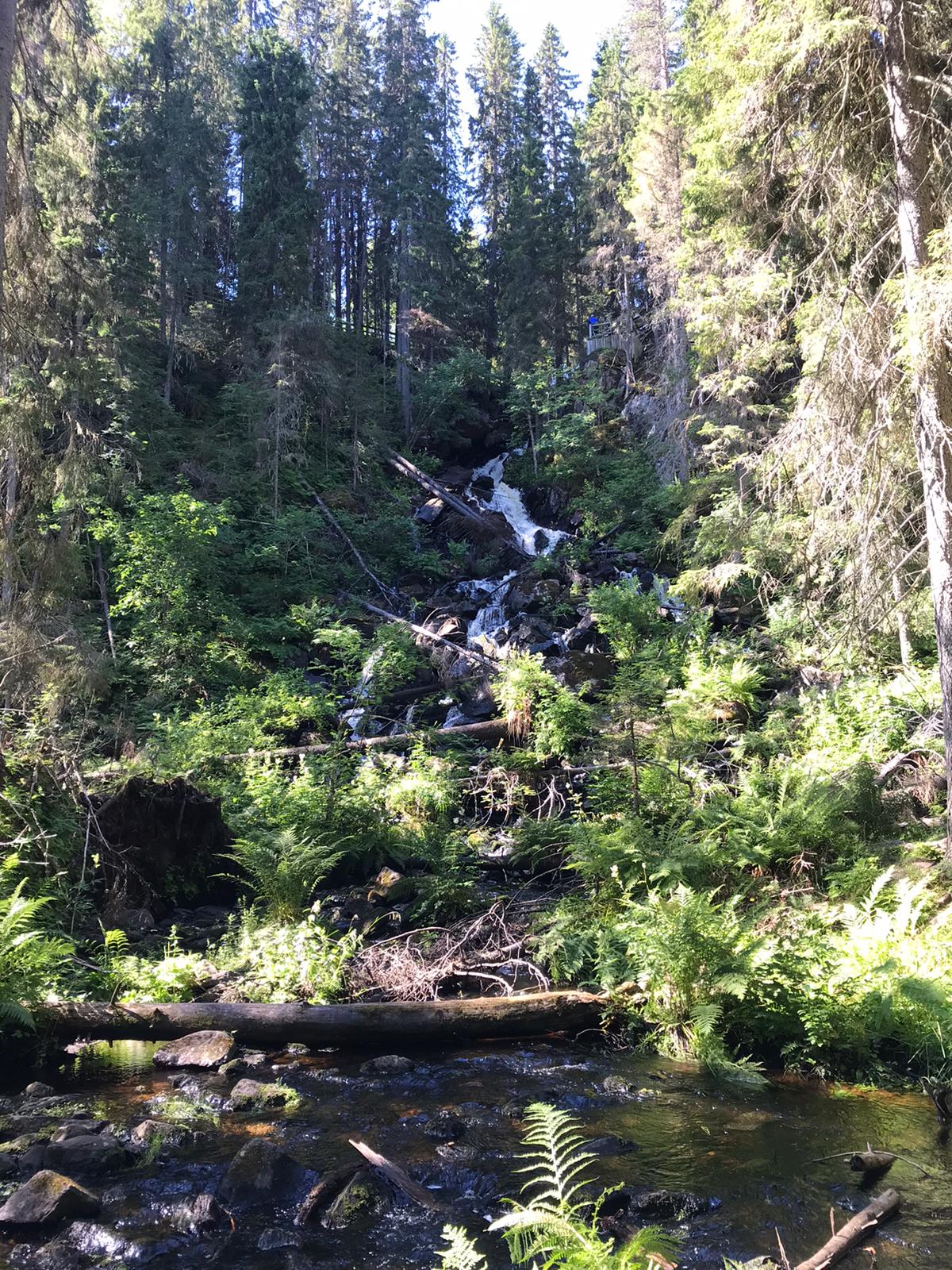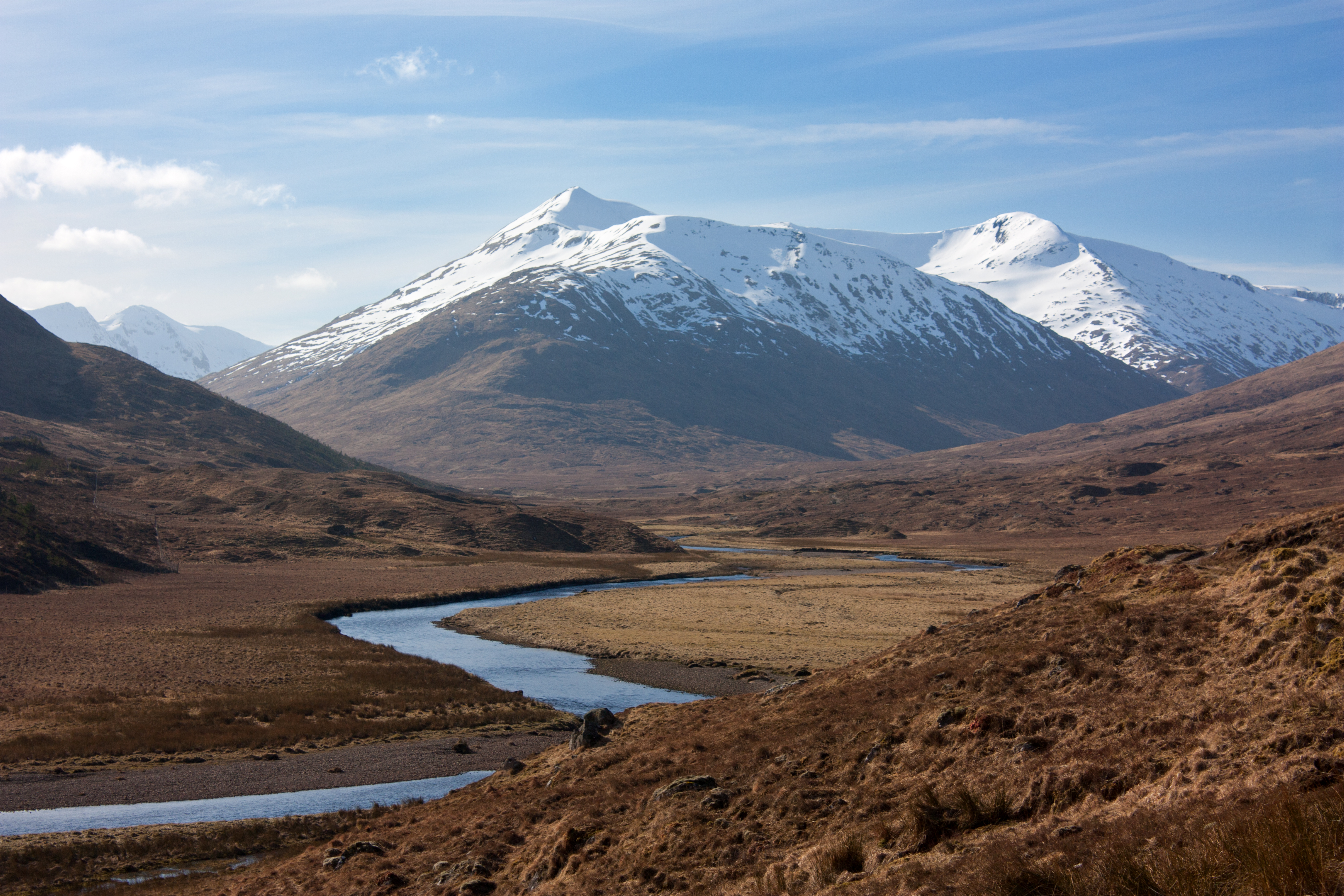|
Lowland
Upland and lowland are conditional descriptions of a plain based on elevation above sea level. In studies of the ecology of freshwater rivers, habitats are classified as upland or lowland. Definitions Upland and lowland are portions of plain that are conditionally categorized by their elevation above the sea level. Lowlands are usually no higher than , while uplands are somewhere around to . On unusual occasions, certain lowlands such as the Caspian Depression lie below sea level. Upland habitats are cold, clear and rocky whose rivers are fast-flowing in mountainous areas; lowland habitats are warm with slow-flowing rivers found in relatively flat lowland areas, with water that is frequently colored by sediment and organic matter. These classifications overlap with the geological definitions of "upland" and "lowland". In geology an "upland" is generally considered to be land that is at a higher elevation than the alluvial plain or stream terrace, which are considered ... [...More Info...] [...Related Items...] OR: [Wikipedia] [Google] [Baidu] |
Caspian Depression
The Caspian Depression ( kk, Каспий маңы ойпаты, ''Kaspıı mańy oıpaty''; rus, Прикаспи́йская ни́зменность, p=prʲɪkɐˈspʲijskəjə ˈnʲizmʲɪnnəsʲtʲ, Caspian Lowland) or Pricaspian/Peri-Caspian Depression/Lowland is a low-lying flatland region encompassing the northern part of the Caspian Sea, the largest enclosed body of water on Earth. It is the larger northern part of the wider Aral-Caspian Depression around the Aral and Caspian Seas. The level of the Caspian sea is below sea level, however several areas in the depression are even lower, and among them Karagiye near Aktau is the lowest at . Geography The depression lies at the southern end of the Ryn Desert, and is in both Kazakhstan and Russia. Most of the Russian Republic of Kalmykia lies in the Caspian Depression. The Volga River and the Ural River flow into the Caspian Sea through this region. The deltas of the Ural and Volga Rivers are extensive wetlands. Th ... [...More Info...] [...Related Items...] OR: [Wikipedia] [Google] [Baidu] |
Plain
In geography, a plain is a flat expanse of land that generally does not change much in elevation, and is primarily treeless. Plains occur as lowlands along valleys or at the base of mountains, as coastal plains, and as plateaus or uplands. In a valley, a plain is enclosed on two sides, but in other cases a plain may be delineated by a complete or partial ring of hills, by mountains, or by cliffs. Where a geological region contains more than one plain, they may be connected by a pass (sometimes termed a gap). Coastal plains mostly rise from sea level until they run into elevated features such as mountains or plateaus. Plains are one of the major landforms on earth, where they are present on all continents, and cover more than one-third of the world's land area. Plains can be formed from flowing lava; from deposition of sediment by water, ice, or wind; or formed by erosion by the agents from hills and mountains. Biomes on plains include grassland ( temperate or subtr ... [...More Info...] [...Related Items...] OR: [Wikipedia] [Google] [Baidu] |
Bottomland Hardwood Forest
The bottomland hardwood forest is a type of deciduous and evergreen hardwood forest found in broad lowland floodplains along large rivers and lakes in the United States and elsewhere. They are occasionally flooded, which builds up the alluvial soils required for the gum, oak and bald cypress trees that typically grow in this type of biome. The trees often develop unique characteristics to allow submergence, including cypress knees and fluted trunks, but can not survive continuous flooding. Typical examples of this forest type are found throughout the Gulf Coast states, and along the Mississippi River The Mississippi River is the second-longest river and chief river of the second-largest drainage system in North America, second only to the Hudson Bay drainage system. From its traditional source of Lake Itasca in northern Minnesota, it fl ... in the United States. It is estimated there were in the region before foresting and farming reduced it to approximately today ... [...More Info...] [...Related Items...] OR: [Wikipedia] [Google] [Baidu] |
Mountain River
A mountain river is a river that runs usually in mountains, in narrow, deep valley with steep banks, rocky stream bed, and accumulated rock debris. Mountain rivers are characterized by high slope and flow velocity, insignificant depth, frequent rapids and waterfalls, as well as dominated washed out processes. The gradient of a mountain river is calculated at 60–80 m/km in upper stream and 5–10 m/km in lower. More precisely it is greater than or equal to 0.002 m/m along most of its stream length. Speed of stream is measured at 1 to 4.5 m/s and higher. Mountain rivers have significant hydro energy producing potential and in arid conditions often used for irrigation. See also * Rapids * Upland and lowland (freshwater ecology) * Bibliography * Marynych, O. ''Geographical Encyclopedia of Ukraine''. "Bazhan Ukrainian Encyclopedia". Kiev 1989. * Wohl, E. ''Mountain rivers revisited''. "AGU". Washington, D.C. 2010. External links Electronic copy of the Wohl's bookat Google B ... [...More Info...] [...Related Items...] OR: [Wikipedia] [Google] [Baidu] |
Highland
Highlands or uplands are areas of high elevation such as a mountainous region, elevated mountainous plateau or high hills. Generally speaking, upland (or uplands) refers to ranges of hills, typically from up to while highland (or highlands) is usually reserved for ranges of low mountains. However, the two terms are sometimes interchangeable. Highlands internationally Probably the best-known area officially or unofficially referred to as ''highlands'' in the Anglosphere is the Scottish Highlands in northern Scotland, the mountainous region north and west of the Highland Boundary Fault. The Highland council area is a local government area in the Scottish Highlands and Britain's largest local government area. Other highland or upland areas reaching 400-500 m or higher in the United Kingdom include the Southern Uplands in Scotland, the Pennines, North York Moors, Dartmoor and Exmoor in England, and the Cambrian Mountains in Wales. Many countries and regions also have areas referre ... [...More Info...] [...Related Items...] OR: [Wikipedia] [Google] [Baidu] |
Bois Brule Bottom
The Bois Brule Bottom (French: Bois Brûlé) is an alluvial floodplain in Bois Brule Township in Perry County, Missouri stretching between Bois Brule Creek to the west and the Mississippi River to the east. The American Bottom stretches from St. Louis south along the east side of the Mississippi River all the way to the mouth of the Kaskaskia River, just north of Fort Kaskaskia, Illinois. At Morrow Island the American Bottom is broken by the Mississippi River, and on the west side of the Mississippi River the alluvial plain continues as the " Le Grande Champ" or Big Field Bottom, which includes Kaskaskia Island. South of Kaskaskia Island the alluvial flood plain continues on as the Bois Brule Bottom. The Bois Brule Bottom is bounded on the north by an old channel of the Mississippi River which flows around Kaskaskia Island, and is bounded on the south by Cinque Hommes Creek (also known as St. Cosme creek), with the Mississippi River lying to the east. The Brazeau Bottom co ... [...More Info...] [...Related Items...] OR: [Wikipedia] [Google] [Baidu] |
American Bottom
The American Bottom is the flood plain of the Mississippi River in the Metro-East region of Southern Illinois, extending from Alton, Illinois, south to the Kaskaskia River. It is also sometimes called "American Bottoms". The area is about , mostly protected from flooding in the 21st century by a levee and drainage canal system. Immediately across the river from St. Louis, Missouri, are industrial and urban areas, but nearby marshland, swamps, and the Horseshoe Lake (which was created by the river) are reminders of the Bottoms' riparian nature. This plain with its rich alluvial soil, served as the center for the pre-Columbian Cahokia Mounds civilization, and later the French settlement of Illinois Country. Deforestation of the river banks in the 19th century to fuel steamboats had dramatic environmental effects in this region. The Mississippi River between St. Louis and the confluence with the Ohio River became wider and more shallow, as unstable banks collapsed into the wate ... [...More Info...] [...Related Items...] OR: [Wikipedia] [Google] [Baidu] |
Turbidity
Turbidity is the cloudiness or haziness of a fluid caused by large numbers of individual particles that are generally invisible to the naked eye, similar to smoke in air. The measurement of turbidity is a key test of water quality. Fluids can contain suspended solid matter consisting of particles of many different sizes. While some suspended material will be large enough and heavy enough to settle rapidly to the bottom of the container if a liquid sample is left to stand (the settable solids), very small particles will settle only very slowly or not at all if the sample is regularly agitated or the particles are colloidal. These small solid particles cause the liquid to appear turbid. Turbidity (or haze) is also applied to transparent solids such as glass or plastic. In plastic production, haze is defined as the percentage of light that is deflected more than 2.5° from the incoming light direction. Causes and effects Turbidity in open water may be caused by growth of phyto ... [...More Info...] [...Related Items...] OR: [Wikipedia] [Google] [Baidu] |
Wetland
A wetland is a distinct ecosystem that is flooded or saturated by water, either permanently (for years or decades) or seasonally (for weeks or months). Flooding results in oxygen-free (anoxic) processes prevailing, especially in the soils. The primary factor that distinguishes wetlands from terrestrial land forms or Body of water, water bodies is the characteristic vegetation of aquatic plants, adapted to the unique anoxic hydric soils. Wetlands are considered among the most biologically diverse of all ecosystems, serving as home to a wide range of plant and animal species. Methods for assessing wetland functions, wetland ecological health, and general wetland condition have been developed for many regions of the world. These methods have contributed to wetland conservation partly by raising public awareness of the functions some wetlands provide. Wetlands occur naturally on every continent. The water in wetlands is either freshwater, brackish or seawater, saltwater. The main w ... [...More Info...] [...Related Items...] OR: [Wikipedia] [Google] [Baidu] |





